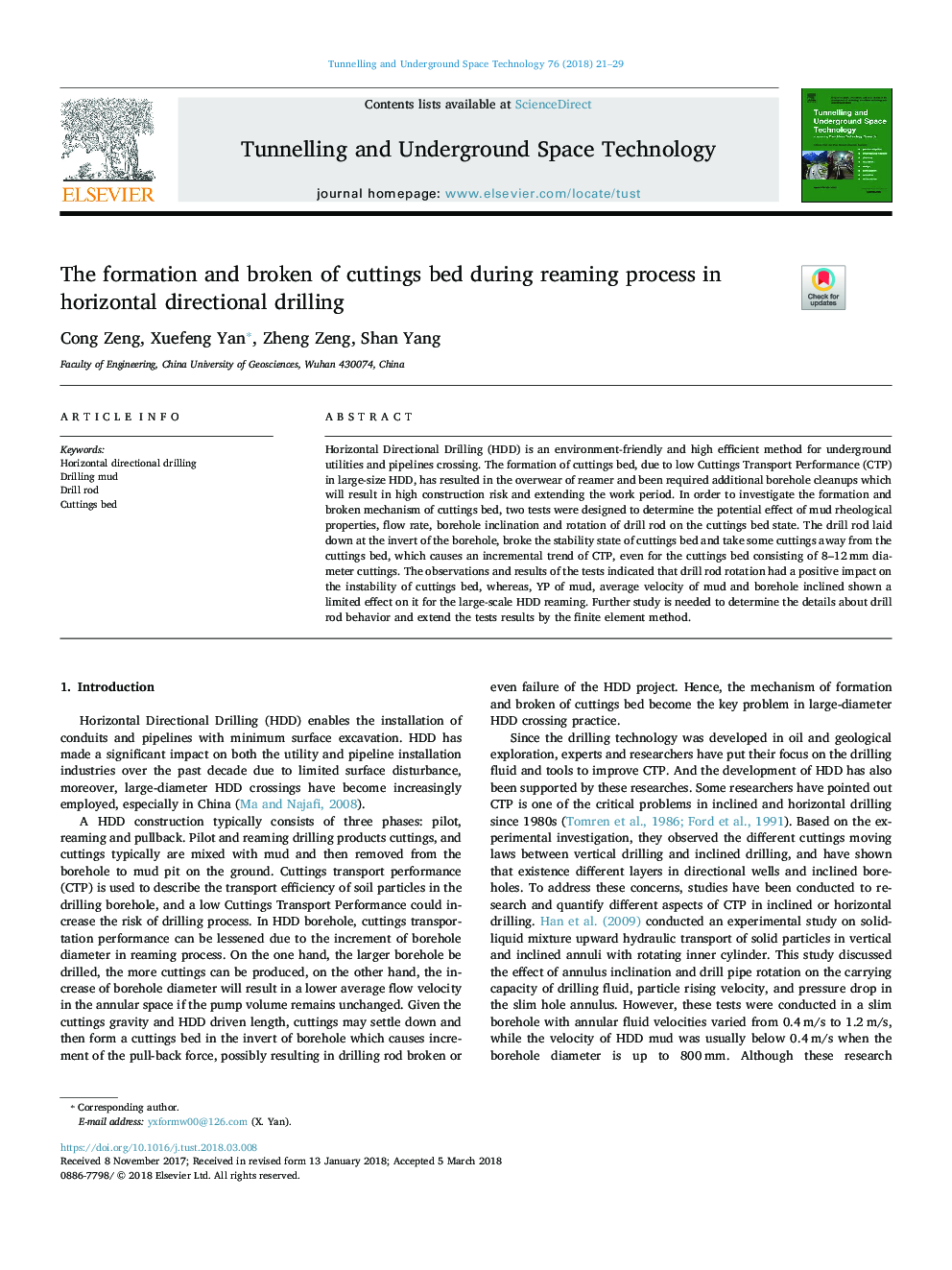| Article ID | Journal | Published Year | Pages | File Type |
|---|---|---|---|---|
| 6782530 | Tunnelling and Underground Space Technology | 2018 | 9 Pages |
Abstract
Horizontal Directional Drilling (HDD) is an environment-friendly and high efficient method for underground utilities and pipelines crossing. The formation of cuttings bed, due to low Cuttings Transport Performance (CTP) in large-size HDD, has resulted in the overwear of reamer and been required additional borehole cleanups which will result in high construction risk and extending the work period. In order to investigate the formation and broken mechanism of cuttings bed, two tests were designed to determine the potential effect of mud rheological properties, flow rate, borehole inclination and rotation of drill rod on the cuttings bed state. The drill rod laid down at the invert of the borehole, broke the stability state of cuttings bed and take some cuttings away from the cuttings bed, which causes an incremental trend of CTP, even for the cuttings bed consisting of 8-12â¯mm diameter cuttings. The observations and results of the tests indicated that drill rod rotation had a positive impact on the instability of cuttings bed, whereas, YP of mud, average velocity of mud and borehole inclined shown a limited effect on it for the large-scale HDD reaming. Further study is needed to determine the details about drill rod behavior and extend the tests results by the finite element method.
Related Topics
Physical Sciences and Engineering
Earth and Planetary Sciences
Geotechnical Engineering and Engineering Geology
Authors
Cong Zeng, Xuefeng Yan, Zheng Zeng, Shan Yang,
